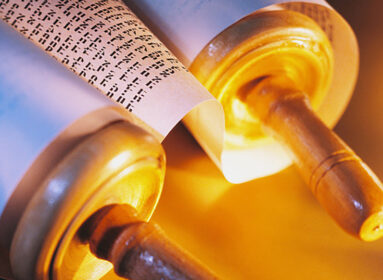
By Ron Kadden
As the Jewish calendar approaches Chanukah, my wife and I are still savoring our recent trip to Israel for Sukkot. We love spending Sukkot in Israel, and have celebrated the holiday in Jerusalem numerous times with our family.
It is truly a national holiday. Schools are closed and many people have off from work for the entire week. In Jerusalem, at least, many people build sukkot – they are everywhere. In addition, there are street fairs, barbecues in the parks and, in the Chassidic and yeshiva communities, there is simcha dancing every night. Even the buses include Sukkot holiday greetings on their electronic destination signs. The days of Chol Hamoed (the intermediate days of the holiday) are very different from any Chol Hamoed we have ever experienced in America. In Israel, those days are truly moed – holidays – as opposed to the States, where they are predominantly chol – weekday – not very different from weekdays throughout the year.
Museums, historic sites, nature attractions, entertainment venues, zoos, etc. are all crowded during Chol Hamoed, as is every eating establishment. Many performances and cultural events are scheduled during this period. This year the Israel Museum sponsored kite flying on its large campus, to which hundreds of people of all ages came with colorful and unusual kites. Sukkot is a “happening” on a national scale.
We are also impressed that sukkot are constructed not only by those who are Orthodox, but by large numbers of secular Israelis, as well. Every place that sells food for consumption on the premises, from restaurants to pizza, donut, and coffee shops, has a sukkah, with sukkot lining the sidewalks of streets with many eateries.
In the middle of Chol Hamoed, traffic in central Jerusalem becomes pretty much gridlocked, as tens of thousands of people make their way to the Western Wall for Birkat Cohanim, the blessing of the Cohanim (priests). The following day, there is a parade in downtown Jerusalem.
Our son Aytan and his family, who live in the Talpiot section of Jerusalem, have their own large, beautiful sukkah, right next to their vegetable garden. We eat all of our meals in their sukkah, and Aytan and our grandchildren sleep in it, weather permitting.
Of course, there are special synagogue services each morning of the holiday, including blessing the lulav and etrog and marching around the synagogue with them. One morning, I was walking to synagogue to join my son and grandson, carrying my lulav and etrog along with my tallit. As I walked along Derech Beit Lechem, I saw a cleaning crew walking towards me. Three or four men were sweeping leaves and debris from the sidewalks into the street, and a mechanical street sweeper followed them, gathering up what they had swept into the street. As they approached me, the street sweeper vehicle came to a stop. The driver opened his door, climbed out, and walked towards me. He was wearing an official-looking jacket, bearing a patch with the emblem of the City of Jerusalem on the left shoulder. He stopped right in front of me, and started speaking to me in Hebrew. My Hebrew is pretty minimal, but it sounded to me like he was asking to borrow my lulav and etrog. I held them up, with a questioning look on my face, and he said “yes,” those are what he wanted for just a minute or two. As I handed them to him, I noticed that he was wearing a kippah. I took the lulav out of its long plastic bag, and he carefully removed the etrog from its box and foam sleeve. Then, he and the other street sweepers joined together and made the blessing, after which he turned his body toward the four cardinal points of the compass, in keeping with Sephardic tradition, and waved the lulav and etrog in each direction, then towards the heavens and down towards the earth. Handing them back to me, he thanked me profusely. With that, he returned to his street sweeper, climbed back in, and proceeded slowly down Derech Beit Lechem, just behind the sidewalk sweepers.
For me, that brief incident typifies the spirit of Jerusalem during Sukkot.
Ron Kadden lives in West Hartford with his wife, Renana, where he is a member of Agudas Achim Synagogue.
Readers are invited to submit original work on a topic of their choosing to Kolot. Submissions should be sent to judiej@jewishledger.com.
CAP: The message on the bus reads “Happy Sukkot Holiday.” It alternated with two other signs which provided the route and destination of the bus.







 Southern New England Jewish Ledger
Southern New England Jewish Ledger













